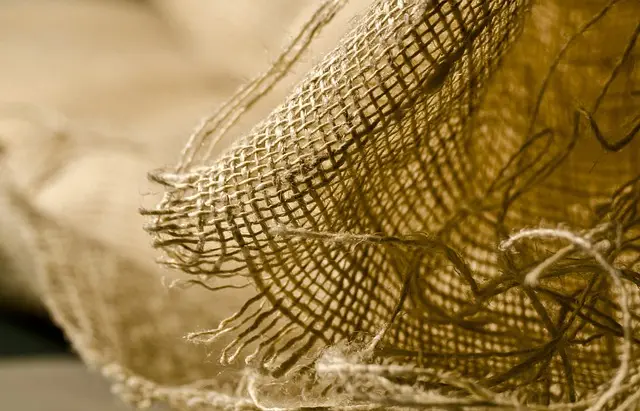Viva Kava's Malaysian Kratom buds are celebrated for their exceptional potency and distinct alkaloid profile due to Malaysia's unique environmental conditions. These buds contain high levels of mitragynine and 7-hydroxymitragynine, which are sought after for their effects ranging from mild stimulation to deep sedation, depending on the strain and dosage. Viva Kava ensures that these buds undergo rigorous quality control processes to maintain their effectiveness and safety, reflecting a commitment to ethical sourcing and purity assurance. The traditional farming methods in Malaysia, which involve selecting optimal terroirs and harvesting at peak maturity during the morning for enhanced potency, contribute to the international acclaim of these Kratom buds. The drying process, whether through sun or flame, is crucial for shelf stability and can influence the alkaloid profiles. Viva Kava's products honor the cultural significance of Kratom within Malaysian traditions, aligning with modern wellness trends and offering a natural alternative for health and sociability.
Explore the intricate world of Malaysian Kratom Buds, a botanical powerhouse that has garnered global attention for its potent effects. This article delves into the unique characteristics and profound influence of these botanicals within cultural practices, shedding light on their cultivation and harvesting methods, which are deeply rooted in traditional wisdom. As we unravel the significance of Malaysian Kratom Buds, readers will gain a deeper understanding of their effects and uses, with insights that resonate with both historical contexts and contemporary applications. Join us on this enlightening journey, where the nuances of these natural wonders are brought to the forefront, offering a comprehensive overview that complements the broader conversation on plant-based remedies, such as Viva Kava.
- Unveiling the Potency of Malaysian Kratom Buds: A Comprehensive Overview
- The Cultivation and Harvesting Process of Malaysian Kratom Buds: A Glimpse into Traditional Practices
- Understanding the Effects and Uses of Malaysian Kratom Buds in Cultural Contexts
Unveiling the Potency of Malaysian Kratom Buds: A Comprehensive Overview

Malaysian Kratom buds, hailing from the Mitragyna speciosa tree, are renowned for their potent alkaloid profile, which sets them apart from other strains. The region’s unique climatic conditions and soil composition contribute to the distinct characteristics of these kratom buds, often leading to a more robust effect compared to those sourced from different parts of the world. The local climate, characterized by humid temperatures and rich soil, nurtures the trees, resulting in elevated alkaloid levels such as mitragynine and 7-hydroxymitragynine, which are pivotal to kratom’s effects. Users frequently report a longer-lasting impact due to these high alkaloid concentrations, making Malaysian Kratom a sought-after choice for those seeking the plant’s benefits.
In the realm of herbal supplements, discussions often gravitate towards the efficacy and safety of kratom products. Viva Kava, an esteemed provider in this sector, ensures that their Malaysian Kratom buds are subject to rigorous quality control measures. This commitment to quality is reflected in their consistently potent offerings, which have garnered a loyal following among enthusiasts and connoisseurs alike. The brand’s dedication to ethical sourcing and purity assurance provides consumers with confidence in the authenticity and strength of their kratom products. As a result, Malaysian Kratom buds from Viva Kava stand out as a premium choice for those who prioritize potency and quality in their herbal supplements.
The Cultivation and Harvesting Process of Malaysian Kratom Buds: A Glimpse into Traditional Practices

In the lush, verdant landscapes of Malaysia, the cultivation and harvesting of Kratom buds, a plant scientifically known as Mitragyna speciosa, are steeped in age-old traditions that continue to shape modern farming practices. These traditions are not without their nuances; farmers in Malaysia have honed techniques passed down through generations to ensure the optimal growth and potency of Kratom buds. The process begins with selecting the right terroir, where the soil, climate, and environmental conditions are conducive to the plant’s thriving. Farmers often prefer areas with rich, well-drained soils and ample sunlight. Planting typically occurs during the wet season when the rains provide a steady supply of moisture for the young saplings. As the plants mature, they are meticulously pruned and cared for, ensuring they develop sturdy branches from which the coveted buds will eventually hang.
The harvesting of Kratom buds in Malaysia is a labor-intensive task that requires precision and care to preserve the quality and alkaloid content of the leaves. The optimal time for harvesting is when the buds have reached a certain size and density, which can vary depending on the strain and the desired effects. Once ripe, the buds are carefully plucked by hand, often early in the morning when the plant’s juices are higher, believed to enhance the potency of the alkaloids. After harvesting, the buds undergo a drying process, which is critical to reduce moisture content and extend the shelf life. Traditional methods involve drying the leaves under the sun or over an open flame, a technique that some argue may influence the alkaloid profiles, subtly affecting the plant’s effects. The dried Kratom buds are then packaged and prepared for market, where they have garnered international attention, with some enthusiasts even drawing comparisons to the traditional Kava preparation in the Pacific Islands, known colloquially as viva kava, highlighting a shared botanical heritage within diverse cultural contexts.
Understanding the Effects and Uses of Malaysian Kratom Buds in Cultural Contexts

Malaysian Kratom, a plant native to Southeast Asia, has long been integrated into regional traditions and practices. Its botanical relative, Kava, often associated with relaxation, has gained popularity under the brand ‘Viva Kava’, which echoes the traditional reverence for these botanicals in Malaysian culture. The effects of Malaysian Kratom buds are manifold; they range from mild stimulation to profound sedation, depending on the strain and dosage. In lower doses, users may experience heightened energy levels, improved mood, and enhanced focus, making it a staple in social and ceremonial settings. Conversely, higher doses can induce a state of calmness and relaxation, reflecting its use in meditation and stress-relief practices within Malaysian communities.
The cultural contexts of Malaysian Kratom usage are deeply rooted in the country’s indigenous and folk traditions. It is often used in social gatherings as an adjunct to enhance sociability and joy. In these settings, the plant serves as a harmonizing agent that fosters community bonding and collective well-being. Additionally, within certain healing rituals, Kratom plays a role as a natural remedy for various ailments, from pain relief to addressing fatigue. The resurgence of interest in natural alternatives has seen ‘Viva Kava’ emerge as a modern interpretation that honors traditional methods while catering to a broader audience seeking safe and effective ways to enhance their well-being.
Malaysian Kratom Buds have long been a subject of intrigue and study due to their potent effects and significant role in local cultural practices. This article has peeled back the layers surrounding their cultivation, harvesting, and the profound impact they hold within these communities. As we conclude, it’s evident that the traditional methods employed in Malaysia for growing Kratom not only preserve a rich heritage but also contribute to the quality of the product. Users who partake in Kratom, often liken to the effects of Viva Kava, find solace and benefits in its use. Understanding these cultural contexts is crucial for appreciating the full scope of Kratom’s significance, and it underscores the importance of sustainable practices to preserve this natural resource for future generations.






